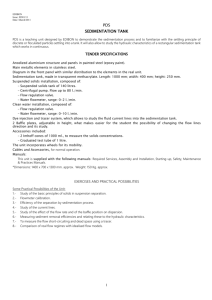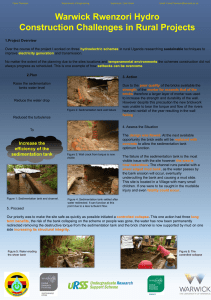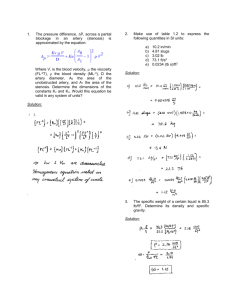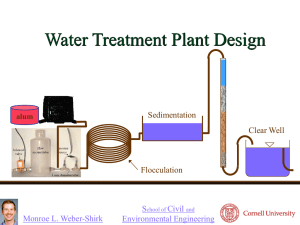ENGRI 113 Prelim 1 2001
advertisement
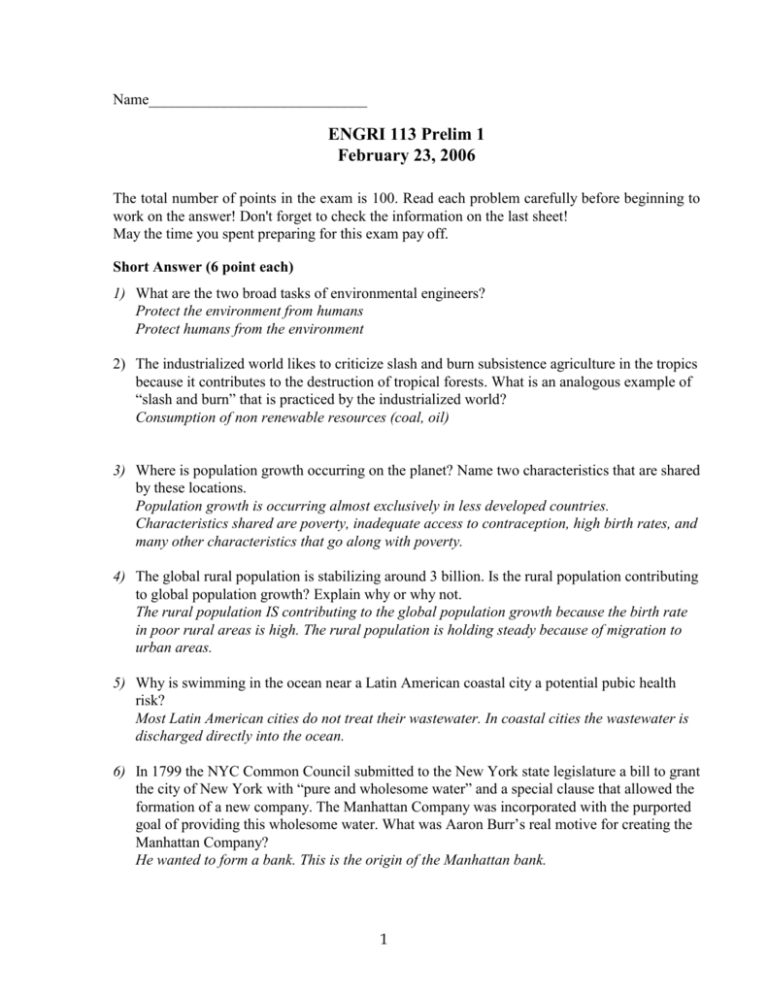
Name_____________________________ ENGRI 113 Prelim 1 February 23, 2006 The total number of points in the exam is 100. Read each problem carefully before beginning to work on the answer! Don't forget to check the information on the last sheet! May the time you spent preparing for this exam pay off. Short Answer (6 point each) 1) What are the two broad tasks of environmental engineers? Protect the environment from humans Protect humans from the environment 2) The industrialized world likes to criticize slash and burn subsistence agriculture in the tropics because it contributes to the destruction of tropical forests. What is an analogous example of “slash and burn” that is practiced by the industrialized world? Consumption of non renewable resources (coal, oil) 3) Where is population growth occurring on the planet? Name two characteristics that are shared by these locations. Population growth is occurring almost exclusively in less developed countries. Characteristics shared are poverty, inadequate access to contraception, high birth rates, and many other characteristics that go along with poverty. 4) The global rural population is stabilizing around 3 billion. Is the rural population contributing to global population growth? Explain why or why not. The rural population IS contributing to the global population growth because the birth rate in poor rural areas is high. The rural population is holding steady because of migration to urban areas. 5) Why is swimming in the ocean near a Latin American coastal city a potential pubic health risk? Most Latin American cities do not treat their wastewater. In coastal cities the wastewater is discharged directly into the ocean. 6) In 1799 the NYC Common Council submitted to the New York state legislature a bill to grant the city of New York with “pure and wholesome water” and a special clause that allowed the formation of a new company. The Manhattan Company was incorporated with the purported goal of providing this wholesome water. What was Aaron Burr’s real motive for creating the Manhattan Company? He wanted to form a bank. This is the origin of the Manhattan bank. 1 7) Explain how a rapid sand filter can be thought of as a series of very tiny sedimentation tanks. Explain and draw picture to illustrate this concept that clearly shows the path of a particle. The particle is diverted from the streamline when the streamline has a horizontal component. The particle has an extra vertical velocity due to gravity. a 8) Explain how a peristaltic pump works, explain why the flow rate is related to the diameter of the peristaltic pump tubing, and chose the correct exponent for this equation ( Q d n ) where Q is the flow rate and d is the tube diameter. A peristaltic pump squeezes a tube and moves the point of the squeeze forward to force fluid forward in the tube. The correct exponent is 2 since the flow is proportional to the cross sectional area of the tubing. 9) As part of the filtration avoidance criteria imposed by the Environmental Protection Agency on NYC, NYC has implemented a Waterfowl Management Program. What is the objective of this program? The objective is to reduce fecal coliform contamination in NYC reservoirs from waterfowl excrement. 10) List 3 transport mechanisms that could cause a particle to collide with a sand grain in a rapid sand filter. Brownian motion, gravity, interception or straining, and electrostatic. 2 Problem solving 1) (20 points) A conventional sedimentation tank is 3 m deep and has a residence time of 4 hours. You know that the important design parameter for a sedimentation tank and you are going to create a small sedimentation tank for your water treatment plant with a design flow of 100 mL/min. You know that greater depth means the particles have to travel even further to be removed and so you are going to use a shallow tank that is only 10 cm deep. What is the critical velocity for the conventional sedimentation tank? If your tank has the same critical velocity as a conventional tank and if your tank is circular, what is the diameter? (The conversions aren’t meant to be difficult, so here they are: 1 mL = 1 cm3, 100 cm = 1 m) First calculate the critical velocity for the conventional design H 3m Vc 0.75 m / hr 4 hr Now we need to find an equation that relates the surface area of the sedimentation tank to the critical velocity and the flow rate. Q Q 4Q Vc therefore As and d As Vc Vc cm3 4 100 min =10 cm d cm 75 60 min 3 2) (20 points) In experiments conducted in the Environmental Engineering laboratory last weekend we observed that the size of floc formed in a tube flocculator decreases when the flow rate reaches 500 mL/min (meaning that the floc couldn’t grow larger because the shear was too high). The tube inner diameter was 9.5 mm. What was the maximum velocity gradient in the tube at this flow rate? 32Q Gmax d3 cm3 32 500 60 s Gmax =99/s 3 0.95cm Equations 4Q D 4 gd p w 3 CD w 100 10 1 Reynolds Number 10 00 00 0 10 00 00 00 10 00 00 10 00 0 10 00 4 10 0 0.1 10 24 CD Re 1000 1 0. 1 Vt Vd Drag Coefficient Re Vt d 2 g p w 18 gd p w 0.3 w Vt Vc H G HQ Q Q LW As du dy tcollision Gmax particles G C particles 32Q d3 64Q 3 d 3 5

